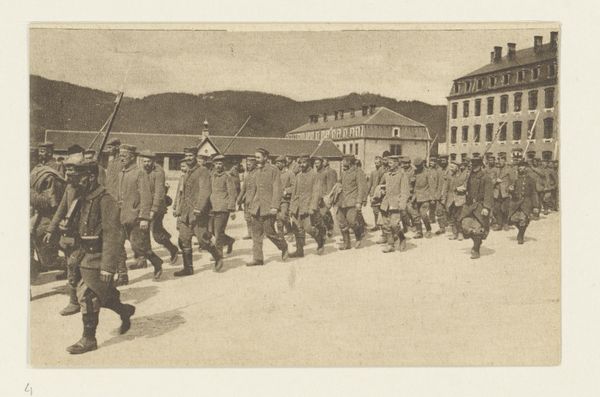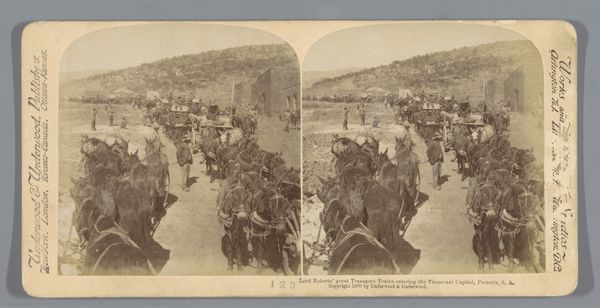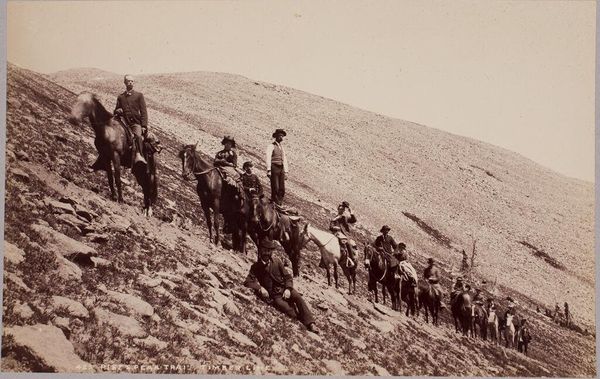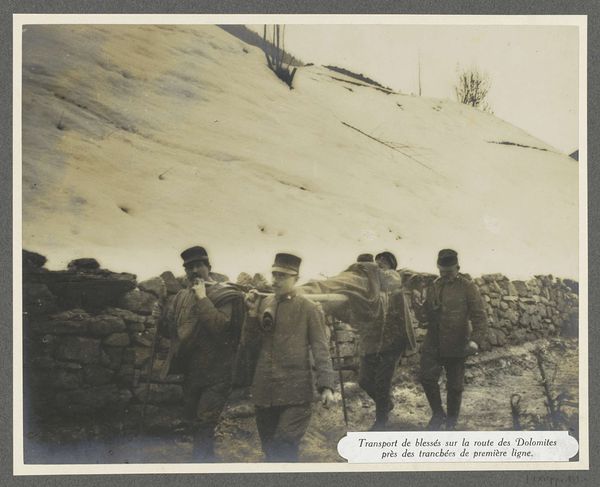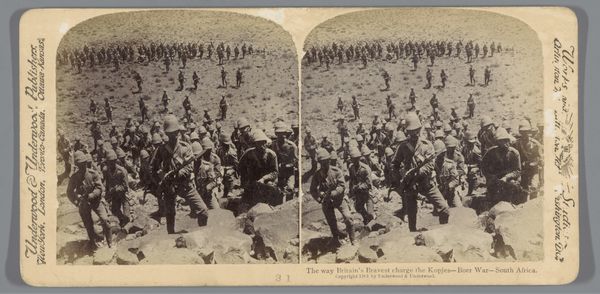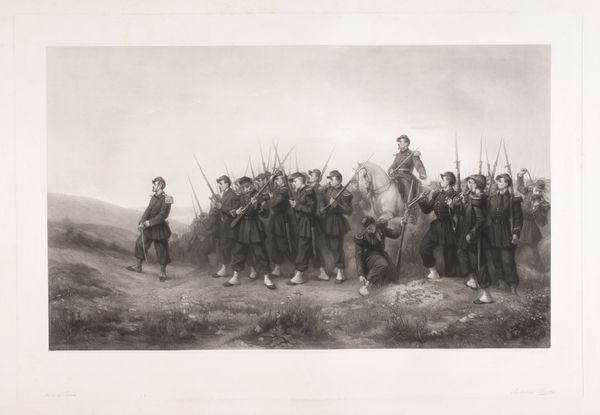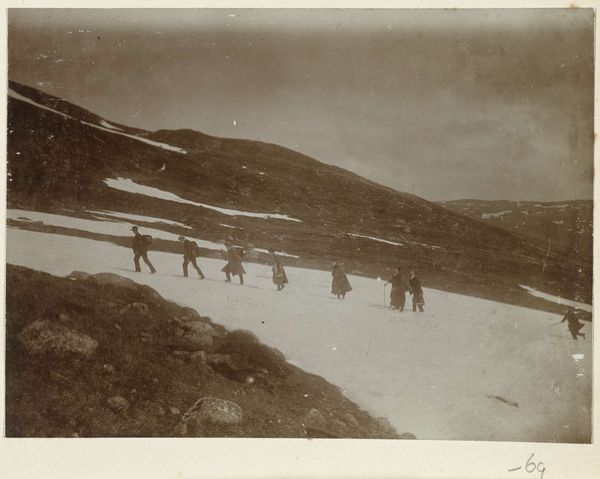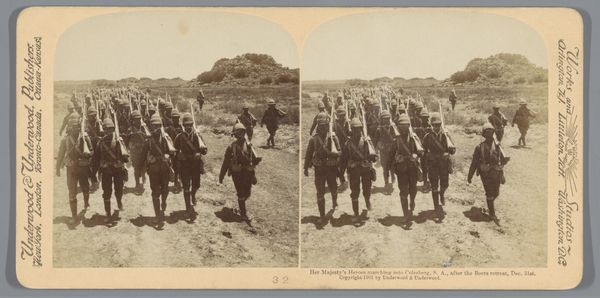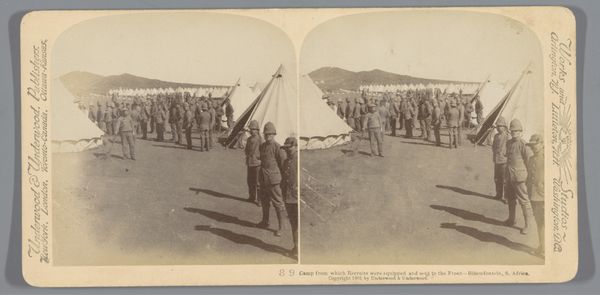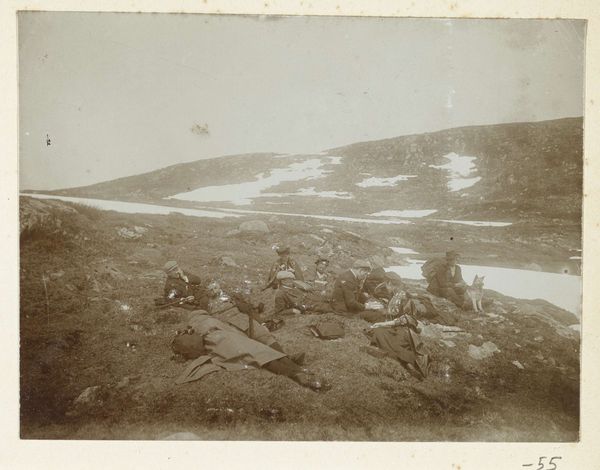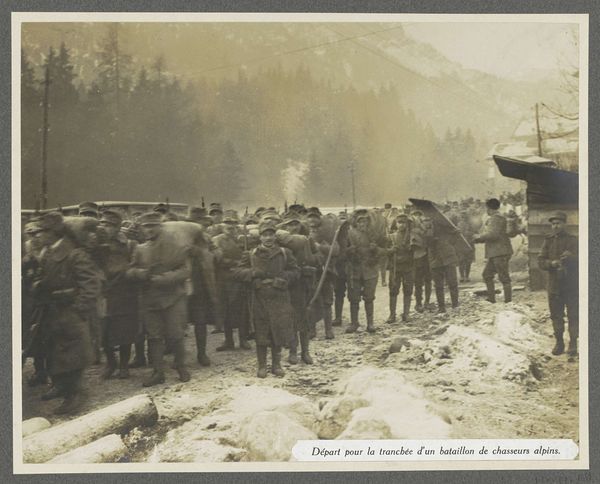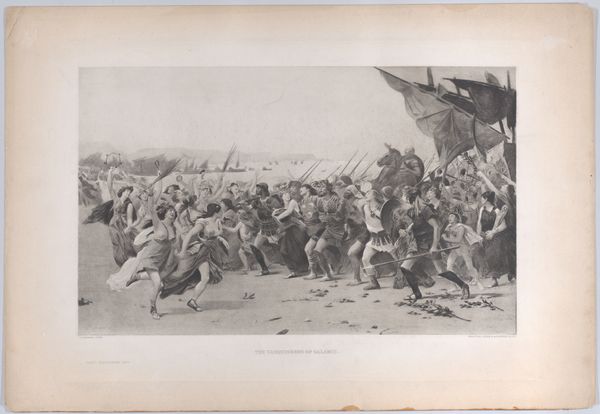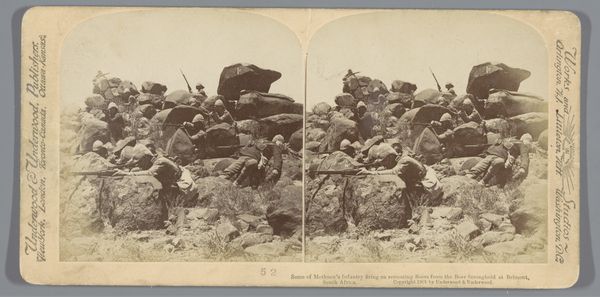
Een colonne Alpijnse Jagers, door de Duitschers de "Blauwe Duivels" bijgenaamd, vertrekken om een met sneeuw bedekte bergengte in de Vogezen in bezit te nemen 1914 - 1915
0:00
0:00
print, photography, gelatin-silver-print
# print
#
landscape
#
photography
#
group-portraits
#
gelatin-silver-print
#
history-painting
#
modernism
#
realism
Dimensions: height 90 mm, width 140 mm
Copyright: Rijks Museum: Open Domain
Curator: This photograph, titled "Een colonne Alpijnse Jagers, door de Duitschers de \"Blauwe Duivels\" bijgenaamd, vertrekken om een met sneeuw bedekte bergengte in de Vogezen in bezit te nemen," translates to "A column of Alpine Hunters, nicknamed the 'Blue Devils' by the Germans, leave to occupy a snow-covered mountain gorge in the Vosges." It's a gelatin-silver print, likely created between 1914 and 1915. Editor: The overall effect is somber and relentless. The soldiers marching are a study in shades of grey against a desaturated landscape. There's a real visual austerity here. Curator: Absolutely. The composition reinforces this with its strong horizontal lines and the way the figures diminish into the distance, a near endless stream of soldiers. The repetition almost denies their individuality, focusing on their function within a military machine. Editor: It certainly invites us to consider the dehumanizing aspects of war. Beyond the formal qualities, it evokes broader themes about national identity, militarism, and the social context of the First World War. How many of these figures were forced into this environment? What were their prospects of returning home? Curator: Precisely, looking at the image formally, one might see the strategic use of light and shadow, which sculpts the harsh terrain and casts the soldiers in a pallid light. But situating this in a historical framework reveals how this manipulated light aestheticizes power and the sheer industrial capacity for warfare. Editor: Also, it seems pertinent to observe the almost uncanny title, dripping with nationalist sentiment—as if merely "possessing" this "snow-covered mountain gorge" serves some productive end. How often do we flatten political violence into the visual field? How often do we see the machinery, but not its human costs? Curator: These photographs served a propaganda function, romanticizing military service. Considering it as a historical document, we must contend with questions of intentionality and manipulation alongside its artistic qualities. Editor: By weaving art history and social theory together, this photograph serves as a painful record, revealing not only the aesthetics of a bygone era, but its ideological trappings too. Curator: Indeed. Hopefully, close attention can offer new ways to consider photography’s aesthetic contributions alongside the historical violence they can often obscure.
Comments
No comments
Be the first to comment and join the conversation on the ultimate creative platform.
